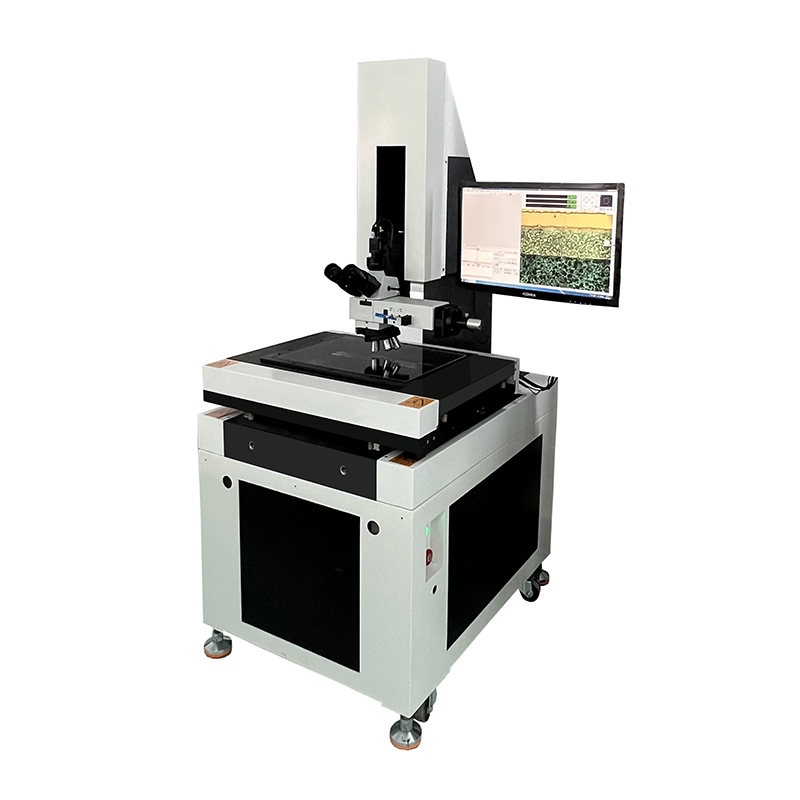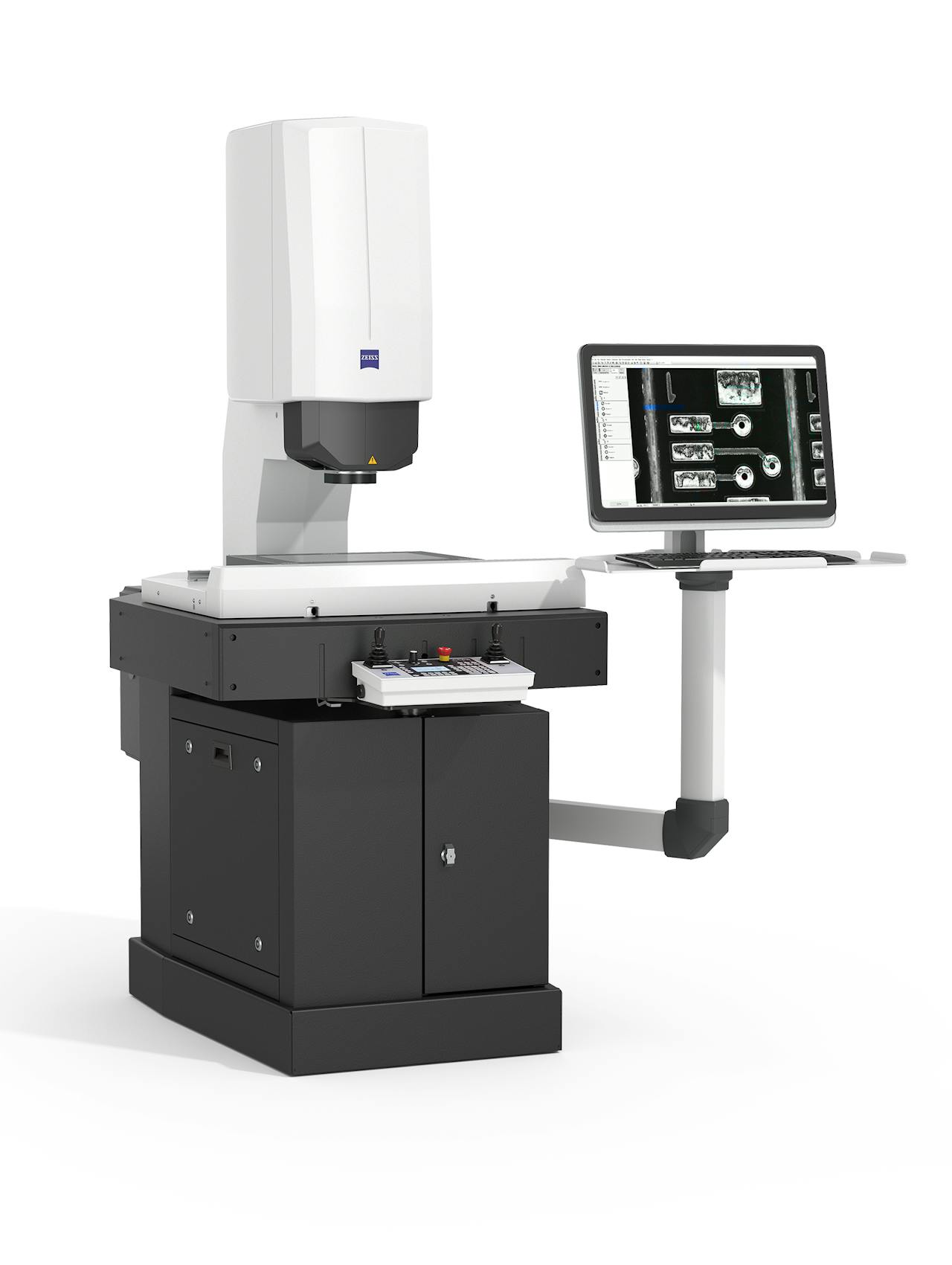The future of quality assurance: optical measurement systems and AI working together
The future of quality assurance: optical measurement systems and AI working together
Blog Article
The Duty of Optical Measurement Equipments in Advancing Metrology Methods
Optical measurement systems have transformed width, bringing a degree of precision that was once inconceivable. You could be surprised to find out just how these innovations, based on basic principles like representation and disturbance, are applied across numerous sectors. Their non-contact capacities not just enhance precision yet additionally enhance processes. As you explore even more, you'll discover just how these systems are shaping the future of measurement and top quality control.
The Development of Width: A Historical Perspective
As you explore the background of metrology, you'll locate that its evolution reflects humankind's quest for precision and standardization. From old human beings utilizing body components as units of dimension to the advancement of standard weights and steps, each action reveals our desire for precision. The Egyptians constructed the pyramids using accurate measurements, while the Romans progressed design with their innovative measuring devices.
Throughout the Renaissance, clinical innovations changed the focus towards extra empirical methods, leading the way for contemporary assessment. The intro of the statistics system in the late 18th century marked a substantial milestone, developing universal criteria. Throughout the 20th century, technical improvements better transformed width, enabling highly precise dimensions in various fields.
Today, assessment remains to evolve, integrating digital innovation and automation. This background highlights not just the relevance of dimension yet also our unrelenting search of improving accuracy and consistency in our progressively intricate globe.
Concepts of Optical Dimension Solutions
Comprehending the principles behind optical measurement systems is essential for precise lead to assessment. You'll want to think about basic optical concepts, measurement accuracy aspects, and reliable system calibration strategies. Each of these aspects plays a vital role in ensuring your measurements are precise and reliable.
Fundamental Optical Principles
While exploring optical measurement systems, you'll experience fundamental optical concepts that create the backbone of exact information acquisition. Light behaves in predictable ways, and recognizing these habits-- like reflection, refraction, and diffraction-- is essential for efficient dimensions. You'll utilize lenses and mirrors to control light and focus it onto your target, guaranteeing precision in your analyses. Furthermore, the wave nature of light permits interference patterns, which can enhance dimension resolution. Polarization can additionally play a key role in distinguishing signal from sound, boosting the clarity of your results. By mastering these concepts, you'll be equipped to leverage optical modern technologies properly, paving the way for innovations in metrology and guaranteeing your measurements are both repeatable and reliable.
Dimension Precision Aspects
To attain high measurement accuracy in optical systems, several aspects come into play, affecting the dependability of your results. High-quality lenses and detectors lower aberrations and sound, guaranteeing your dimensions are accurate. By attending to these aspects, you can improve the general efficiency of your optical dimension systems, leading to even more reputable and accurate results in your width applications.
System Calibration Methods
Achieving high dimension precision is just component of the formula; correct system calibration strategies are just as vital in optical measurement systems. Next, employ known measurements to confirm the system's outcome and make required modifications. With these methods, you'll boost the integrity of your optical dimension system.
Secret Technologies Behind Optical Measurement
Optical measurement systems count on several key technologies that enhance accuracy and efficiency in width. One crucial technology is interferometry, which uses the disturbance of light waves to determine small displacements and surface abnormalities with severe precision. You'll also find laser scanning systems, which record in-depth 3D data of things quickly, making them important for dimensional evaluation.
Furthermore, CCD and CMOS sensors play a substantial duty in converting light right into electrical signals, permitting for high-resolution imaging and precise dimensions. Advanced algorithms for picture processing even more boost measurement precision by examining data in actual time, straining sound and improving attributes.
Ultimately, fiber optics give flexibility and the capability to measure in hard environments while keeping signal stability. By leveraging these modern technologies, you can accomplish premium lead to your width tasks, making certain that your measurements are both exact and dependable.
Applications of Optical Dimension in Sector
As sectors increasingly demand precision and performance, the applications of optical measurement systems have actually come to be essential across various industries. In production, these systems aid you monitor measurements and resistances in real-time, ensuring high quality control without time-consuming manual checks. In the automobile industry, optical measurements aid in lining up elements with accuracy, improving security and efficiency.
In electronic devices, you're using optical approaches to evaluate min attributes on circuit boards, finding defects that could result in failings. The aerospace field gain from non-destructive testing methods, enabling you to examine materials and parts without compromising their integrity.
Optical measurement also plays a crucial function in textiles, making certain fabric dimensions fulfill specific specs. optical measurement system. With their ability to give high-resolution information swiftly, these systems empower you to make enlightened decisions, streamline processes, and inevitably drive innovation across your sector
Enhancing Precision and Effectiveness in Dimensions
When you think of boosting accuracy in dimensions, accuracy in your dimension methods is important. By streamlining these procedures, you can accomplish quicker results without giving up high quality. Allow's discover exactly how adopting innovative optical measurement systems can elevate both precision and effectiveness in your work.
Accuracy in Measurement Strategies
Precision in measurement methods is essential for attaining trusted outcomes in metrology, especially because tiny discrepancies can lead to significant errors. By utilizing sophisticated optical dimension systems, you can improve the accuracy of your measurements. In enhancement, specific dimensions enable you to preserve top quality control, making sure that items fulfill rigid specifications.
Improving Measurement Processes
To boost precision and efficiency in measurements, streamlining your dimension procedures is essential. Start by adopting optical dimension systems that give real-time information, reducing the moment invested on hands-on visit the website recording. These systems frequently incorporate perfectly with existing software, permitting you to automate information collection and analysis.
Next, standardize your dimension procedures. By executing constant treatments, you decrease irregularity and boost repeatability. Do not fail to remember to consistently adjust your equipment to assure its accuracy.

The Effect of Optical Measurement on R & D
As researchers endeavor to push the limits of innovation, optical measurement systems have ended up being vital tools in the advancement process. These systems supply you with exact, real-time data that enhances your ability to evaluate complicated materials and frameworks. In numerous areas, from biotechnology to aerospace, you count on optical measurements to maximize designs and improve item efficiency.

With high-resolution imaging and non-contact approaches, you can minimize sample disruption, enabling even more precise results. This ability to catch minute details accelerates your R&D cycle, letting you repeat designs quickly and efficiently. Additionally, optical measurement cultivates cooperation throughout techniques, as the information produced is typically quickly interpretable and shareable.
Inevitably, incorporating optical measurement systems into your study not just boosts performance yet likewise grows your understanding of the sensations you research study. By leveraging these sophisticated techniques, you're far better geared up to innovate and remain ahead in a competitive landscape.
Future Fads in Optical Measurement Equipments
With the fast improvement of technology, you're likely to see considerable changes in optical dimension systems that will certainly redefine their application throughout various sectors. You'll observe a move toward raised automation and combination of expert system, permitting real-time information analysis and improved accuracy. Miniaturization is one more trend; portable gadgets will certainly allow measurements in tighter rooms, making them suitable for fields like aerospace and biomedical applications.
In addition, the development of advanced products, such as photonic crystals, will boost sensitivity and resolution. Expect to see systems that can run in difficult environments, supplying dependable dimensions in extreme problems. Cloud-based analytics will certainly also play an essential role, offering you access to huge find more information datasets for better decision-making. As these innovations merge, you'll discover that optical dimension systems not just enhance precision yet also improve operations, ultimately driving innovation and performance in your projects.
Frequently Asked Inquiries
Just How Do Optical Dimension Solutions Contrast to Conventional Measurement Techniques?
Optical dimension systems offer higher accuracy and faster outcomes compared to standard strategies. You'll discover they catch more data points properly, minimizing human mistake and enhancing integrity, making them a preferred selection in numerous applications.
What Industries Benefit The Majority Of From Optical Measurement Systems?
You'll locate industries such as aerospace, auto, and electronic devices profit most from optical measurement systems. These fields count on specific dimensions to guarantee quality and efficiency, boosting efficiency and lowering prices through sophisticated modern technology.

Are Optical Measurement Solutions Expensive to Apply?
Optical dimension systems can be pricey to implement, however their precision and efficiency often warrant the expense. Buying such technology can bring about considerable long-lasting savings and renovations in quality across various applications.
What Skills Are Called For to Run Optical Measurement Equipments?
To run optical measurement systems, you'll require strong analytical skills, focus to detail, and effectiveness in software application tools. Experience with optics and an check that understanding of measurement concepts will certainly likewise improve your efficiency and efficiency.
Exactly How Do Environmental Aspects Influence Optical Measurements?
Ecological elements like temperature level, humidity, and air top quality can misshape optical measurements. You'll see variants in precision due to light interference or refraction. optical measurement systems. Preserving stable conditions is important for reliable and precise optical dimension results
Final thought
In summary, optical dimension systems are changing width by supplying unmatched accuracy and performance. By taking advantage of sophisticated concepts and modern technologies, these systems improve precision while minimizing disruptions in numerous sectors. As you check out future trends, you'll see just how the assimilation of AI and automation will proceed to elevate dimension techniques, driving advancement and boosting quality assurance. Accepting these developments will be important for remaining competitive and accomplishing quality in your area.
Accomplishing high dimension accuracy is only part of the formula; proper system calibration strategies are similarly crucial in optical measurement systems.When you think about enhancing accuracy in dimensions, accuracy in your dimension methods is necessary. By using advanced optical dimension systems, you can boost the precision of your measurements.To boost accuracy and effectiveness in measurements, enhancing your dimension procedures is necessary. How Do Optical Measurement Equipments Compare to Traditional Dimension Techniques?
Report this page